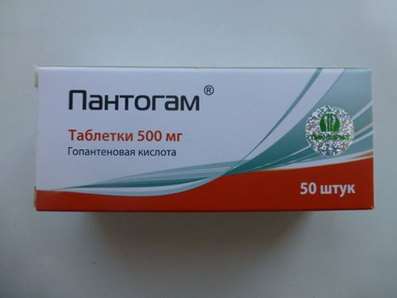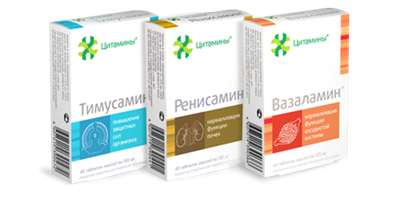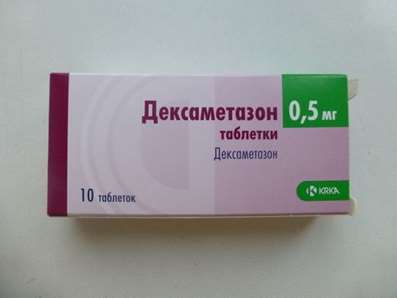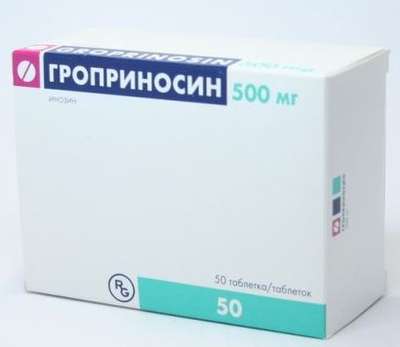Instruction for use: Finalgel
I want this, give me price
Active substance Piroxicam
└ĎŇ M02AA07Piroxicam
Pharmacological group
NSAIDs - Oxicams
Nosological classification (ICD-10)
M06.9 Other specified rheumatoid arthritis
Rheumatoid arthritis,Pain syndrome in rheumatic diseases, Pain in rheumatoid arthritis, Inflammation in rheumatoid arthritis, Degenerative forms of rheumatoid arthritis, Children's rheumatoid arthritis, Exacerbation of rheumatoid arthritis, Acute articular rheumatism, Rheumatic arthritis, Rheumatic polyarthritis, Rheumatoid arthritis, Rheumatic polyarthritis, Rheumatoid arthritis, Rheumatoid arthritis of active course, Rheumatoid arthritis, Rheumatoid polyarthritis, Acute rheumatoid arthritis, Acute rheumatism
M08 Juvenile [juvenile] Arthritis
Juvenile arthritis, Juvenile chronic polyarthritis, Juvenile chronic arthritis, Juvenile rheumatoid arthritis, Arthritis juvenile chronic
M19.9 Arthrosis, unspecified
Change in brush with osteoarthritis, Osteoarthritis, Osteoarthrosis, Arthrosis of large joints, Pain syndrome in osteoarthritis, Pain syndrome in acute inflammatory diseases of the musculoskeletal system, Pain syndrome in chronic inflammatory diseases of the musculoskeletal system, Deforming arthrosis, Deforming osteoarthritis, Deforming osteoarthritis of joints, Osteoarthritis in the acute stage, Osteoarthritis of large joints, Acute pain syndrome with osteoarthritis, Post-traumatic osteoarthritis, Rheumatic osteoarthritis, Spondylarthrosis, Chronic osteoarthritis
M45 Ankylosing spondylitis
Ankylosing spondylarthrosis, Marie-Strumpel disease, Ankylosing spondylitis, Pain syndrome in acute inflammatory diseases of the musculoskeletal system, Pain syndrome in chronic inflammatory diseases of the musculoskeletal system, Bechterew's disease, Ankylosing spondylitis, Diseases of the spinal column, Rheumatic spondylitis, Bechterew-Marie-Strumpel disease
M75.0 Adhesive shoulder capsulitis
Acute shoulder-scapular periarthritis, Duplay's disease, Duplay Syndrome, Frozen shoulder, Shoulder-shoulder periarthritis, Periarteritis humeroscapular, Shoulder periarthritis, Pleiraptocular periarthritis, Capsule, Frozen shoulder
M77.9 Other unspecified
Capsule, Periarthritis, Tendonitis, Tendopathy, Periarthropathy
R52.9 Unspecified Pain
Pain after cholecystectomy, Pain shooting, Non-malignant pain, Obstetric and gynecological pain, Pain syndrome, Pain in the postoperative period, Pain in the postoperative period after orthopedic surgery, Pain of inflammatory genesis, Pain than cancer genesis, Pain syndrome after diagnostic procedures, Pain after surgery Diagnostic, Pain after surgery, Pain after orthopedic surgery, Pain after injuries, Pain after the removal of hemorrhoids, Pain at the non-rheumatic inflammation of nature, Pain in inflammatory lesions of the peripheral nervous system, Pain in diabetic neuropathy, Pain in acute inflammatory diseases of the musculoskeletal system, Pain when the tendon pathology, Pain smooth muscle spasm, Pain spasm of smooth muscles (renal and biliary colic, intestinal spasms, dysmenorrhea), Pain spasm of smooth muscles of internal organs, Pain spasm of smooth muscles of internal organs (kidney and biliary colic, intestinal spasms, dysmenorrhea), Pain in trauma syndrome, Pain with injuries and after surgical interventions, Pain in chronic inflammatory diseases of the musculoskeletal system, Pain with duodenal ulcer, Pain syndrome in gastric ulcer, Pain syndrome in gastric ulcer and duodenal ulcer, pain, Pain during menstruation, pain syndromes, painful condition, Painful foot fatigue, Sore gums when wearing dentures, Soreness of the cranial nerves exit points, Painful menstrual irregularities, Painful dressings, Painful muscle spasm, Painful teeth growth, Melosalgia, Pain in the area of the surgical wound, Pain in the postoperative period, Pain in the body, Pain after diagnostic procedures, Pain after orthopedic surgery, Pain after surgery, The pains of the flu, Pain in diabetic polyneuropathy, Pain for burns, Pain during sexual intercourse, Pain during diagnostic procedures, Pain during therapeutic procedures, for colds Pain, Pain in sinusitis, Pain in trauma, Pain traumatic, The pain in the postoperative period, Pain after diagnostic procedures, The pain after sclerotherapy, Pain after surgery, postoperative Pain, Pain postoperative and posttraumatic, posttraumatic pain, Pain when swallowing, Pain in infectious and inflammatory diseases of the upper respiratory tract, The pain of burns, The pain in traumatic muscle injury, Pain in trauma, The pain of tooth extraction, The pain of traumatic origin, Pain caused by spasm of smooth muscles, Expressed pain syndrome, Expressed pain syndrome, traumatic origin, Postoperative pain, Post-traumatic pain, Post-traumatic pain syndrome, Torpid pain, Traumatic pain, Traumatic pain, Mild pain, Moderately severe pain, Moderate pain, Polyarthralgia with polymyositis
T14.0 Surface injury of unspecified body region
Abrasions, Scratch, Skin Wounds, Wounds of soft tissues, Hematoma, Hematoma of traumatic origin, Hematomas, Hematomas of muscles, Hematomas of soft tissues, Healing of the skin, Bruise, Bruising due to sprains and bruises, Microtrauma, External bruises, Small combing, Superficial hematoma, Superficial damage to the skin and mucous membranes, Subcutaneous hematoma, Post-traumatic hematoma, Post-traumatic disturbance of microcirculation, Skinness of the skin, Traumatic plexus lesions, Injury, Contusion of soft tissues, Joint bruise, Traumatic bruises, Traumatic injury, Primary treatment of surface contaminated wounds, Abrasion, Bruise
T14.3 Dislocation, sprain and damage to the capsular-ligamentous apparatus of the joint of the unspecified area of the body
Painful stretching of muscles, Pain and inflammation in tension, Dislocation of dislocation, Degenerative changes in the ligamentous apparatus, Edema due to sprains and bruises, Edema after interventions for sprains, Damage and rupture of ligaments, The musculoskeletal system is damaged, Damage to ligaments, Damage to the joints, Ligament ruptures, Tendon tendons,Ruptures of the tendons of muscles,Stretching, Crick, Stretching of the muscle, Sprain, Tension of the tendons, Extensions,Stretch muscles, Sprains, Tension of the tendons, Injury of the musculoskeletal system, Injuries to the joints, Injuries of capsule-articular tissues, Injuries of the osteoarticular system, Injuries to ligamentsInjuries to the joints, Joint wounds, Stretching of the ligamentous apparatus, Habitual stretching and tearing
T14.9 Injury unspecified
Pain syndrome after trauma, Pain syndrome with injuries, Pain syndrome with trauma and after surgery, Pain in case of injury, Pain of a traumatic nature, Joint pain with injuries, Postoperative and post-traumatic pain, Pain in case of injury, Pain of a traumatic origin, Severe pain syndrome of traumatic origin, Deep tissue damage, Deep scratches on the trunk, Closed injury, Minor Household Injuries, Minor skin damage, Violations of the integrity of soft tissues, Uncomplicated trauma, Extensive traumatic injury, Acute pain syndrome of traumatic origin, Edema with trauma, Postponed sports injuries, Post-traumatic pain, Soft tissue injuries, Joint wounds, Sports injuries, Injury, Traumatic pain, Traumatic pains, Traumatic infiltrate,Injuries to sports
Composition and form of release
Gel for external use 1 g
piroxicam 5 mg
auxiliary substances: propylene glycol; isopropanol; cetyl; hypromellose; sodium metabisulphite; sodium hydroxide; potassium dihydrogen phosphate; distilled water
in tubes of 35 or 50 g; in a pack of cardboard 1 tuba.
Description of dosage form
Transparent or slightly opalescent gel of light yellow color with a faint smell of isopropyl alcohol.
pharmachologic effect
Pharmacological action - anti-inflammatory, antipyretic, analgesic, antiaggregant.
Pharmacodynamics
Non-selective inhibition of COX (cyclooxygenase) 1 and 2.
Indications
Pain syndrome:
ankylosing spondylitis;
osteoarthritis;
rheumatoid arthritis;
juvenile chronic arthritis;
tendonitis;
tenosynovitis;
humerus syndrome;
sports injuries (bruises, dislocations, ligament damage).
Contraindications
hypersensitivity to piroxicam or other components of the drug;
hypersensitivity to acetylsalicylic acid or other NSAIDs;
pregnancy (III trimester);
kidney failure;
age to 14 years.
Carefully:
bronchial asthma;
allergic rhinitis;
recurrent polyposis of the nose and paranasal sinuses;
chronic obstructive pulmonary disease or chronic pulmonary infections.
pregnancy and lactation
Finalgel« should be used with caution during the first and second trimester of pregnancy.
Piroxicam in small amounts can penetrate into breast milk, so it is not recommended to use the drug during breastfeeding.
Side effects
Local skin irritation (inflammation, redness, hives, itching, peeling); local allergic reactions.
Interaction
It is not known.
Dosing and Administration
Externally, adults and children over 14 years old - 1 g of gel (approximately the size of hazelnut) 3-4 times a day. The gel should be applied to the skin over the affected area and rubbed gently. The duration of treatment depends on the severity of the symptoms and averages 2-3 weeks with tendinitis, tendovaginitis and humerus syndrome and 1-2 weeks with sports injuries.
Overdose
Symptoms: when using the drug in doses exceeding the recommended ones, in single cases, the occurrence of systemic side effects is not excluded: headache; disorders of the gastrointestinal tract (nausea, pain in the epigastric region); Shortness of breath.
An isolated case of development of interstitial nephritis with functional renal failure and nephrotic syndrome is described.
Treatment: symptomatic.
In case of symptoms of overdose, the drug should be discontinued and consult a doctor.
special instructions
Patients suffering from bronchial asthma, allergic rhinitis, recurrent polyposis of the nose and paranasal sinuses, COPD, or chronic pulmonary infections are usually more sensitive to NSAID use. In these patients, asthma attacks may occur, mucosal edema and urticaria may appear.
Do not apply gel to damaged skin and eye contact.
storage Conditions
At a temperature of no higher than 25 ░ C.
Keep out of the reach of children.
Shelf life
5 years. After opening the tube - 6 months.
Do not use after the expiry date printed on the package.

 Cart
Cart





